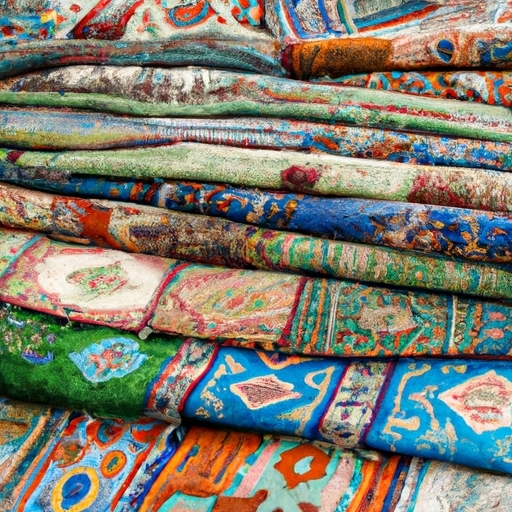
Textile dyeing is the process of adding colour to fabric. It involves immersing fabric in a dyebath (containing dyes, chemical additives and other substances) and applying pressure at high temperatures. The result is an evenly coloured piece of cloth that will not fade or change shape over time!
The type of textile dye used depends on the fibres in question- synthetic fibres require specialised dyes whereas natural fibres have different requirements. There are many techniques used in the dyeing process – ranging from pigment printing to discharge printing. Each technique produces a unique effect on the fabric and can be manipulated to create interesting designs. (It's also possible to combine techniques for even more complex patterns.)
Moreover, there are various ways to prepare fabrics before dyeing them such as scouring, bleaching and mercerisation. Scouring removes unwanted oils and dirt which could interfere with the dye bonding; bleaching ensures all colours come out true; whilst mercerisation strengthens cotton fabric by making it more lustrous.
So, textile dyeing is much more than simply throwing some dye into a pot - it requires skill, knowledge and creativity! To achieve good results you must understand how the various components work together so that you can make adjustments as needed. Achieving success with each project takes practice but once you get into the swing of things it can be incredibly rewarding!
Navajo Weaving is an ancient art form that has been passed down through generations of native people in the Southwest United States. It's a unique and beautiful way of creating fabric with natural materials like wool and cotton, as well as other traditional fibers. The History of Navajo Weaving dates back hundreds of years to when the tribe first settled in what is now Arizona, New Mexico and parts of Colorado. (It) was and still is used for making a variety of items including rugs, blankets, bags, clothing and more!
The process begins with carding or combing the material to make it smooth before spinning it into threads. Then these threads are woven together on a loom using different techniques such as twining, knotting or interlocking. Every piece made by hand is truly unique due to its intricate patterns created from this weaving technique. Moreover, each design typically has spiritual significance which further distinguishes them from others.
Moreover, over time Navajo Weavers have adapted their work to fit changing trends and styles to meet customer demand. For example they started incorporating synthetic dyes into their designs to create more vibrant colors than could be achieved with natural dyes alone. Additionally they also began producing pieces for commercial markets rather than just for ceremonial purposes. In this way Navajo weaving continues to evolve while still maintaining its traditional roots!
In conclusion, Navajo Weaving is an incredibly important part of history that provides insight into how native people lived centuries ago. As a result it remains highly sought after today both for its stunning beauty as well as cultural significance! Indeed it's an amazing accomplishment that will likely remain treasured for many years yet come!
